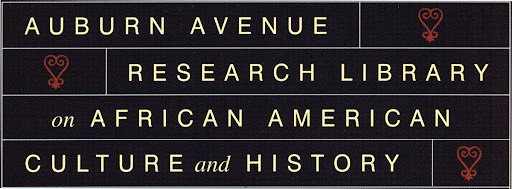Today’s treasure offers the opportunity for some Halloween themed fun, as well as a discussion of ephemera identification in archival processing. Pictured here is a business card of Mr. G.W. Durham, a funeral director in Campbellsville, Kentucky. One side of the card gives an interesting description of Durham’s professional expertise along with his picture and contact information, while the other lists costs and services.
In addition to aligning with the theme of death often associated with Halloween, this business card also presents the subject of ephemera identification. When processing archival collections, archivists come across a variety of materials, some which are known as ephemera. According to the Society of American Archivists, ephemera is defined as “materials, usually printed documents, created for a specific, limited purpose, and generally designed to be discarded after use.” Examples of different types of ephemera include brochures, event tickets, and advertisements.
When organizing a collection, it is necessary for an archivist to identify different types of ephemera for labeling purposes and in order to better assist researchers. However, some, including Durham’s business card, are not easily identifiable compared with modern formats. His cards fit into the category of personal cards, which Chris E. Makepeace, author of Ephemera: A Book on Its Collection, Conservation and Use, says includes visiting cards, identity cards and business cards. But they do not conform exactly to the qualifications of current day business cards and may have been called by a different title during the period used.
While the exact identifying term of Durham’s card may be unknown at this time, it is still a valuable tool for researchers. The information printed on personal cards – names, addresses, telephone numbers, professions, and even business details – might not be available otherwise, making this type of ephemera historically significant. Personal cards allow researchers to learn about individuals and businesses and are helpful for genealogical research. They may seem like things to be thrown away but are useful, important forms of documentation.
References:
Makepeace, Chris E. Ephemera: A Book on Its Collection, Conservation and Use. Vermont: Gower Publishing Company, 1985.
Moses, Richard Pearce. A Glossary of Archival and Records Terminology. The Society of American Archivists. http://www.archivists.org/glossary/index.asp
Rickards, Maurice and Michael Twyman. Encyclopedia of Ephemera: A Guide to the Fragmentary Documents of Everyday Life for the Collector, Curator and Historian. Routledge: New York, 2000.
Posted by Nicole Carmolingo, AARL Archives Intern
Tuesday, October 26, 2010
Treasures from the Vertical Files: Salesman of Death
Labels:
archives,
ephemera,
processing,
research,
Society of American Archivists,
Treasures from the Vertical Files,
vertical files
Thursday, October 21, 2010
Treasures from the Vertical Files: Harlem Uproar House Souvenir Booklet and Menu
The latest treasures from the vertical files include a souvenir booklet and menu from the Harlem Uproar House, which was once located on 51st Street at Broadway in New York City during the 1930s and 1940s. The menu details the food and beverage offerings of the establishment, which was open every night from 6pm to 4am. The souvenir booklet introduces the various performers employed, who took part in the four shows given each evening.
Harlem nightclubs were a well known fixture of the Harlem Renaissance, however the existence of black nightclubs in New York City dates back to the 1860s. As the popularity of nightclubs rapidly increased during the 1910s steps were taken to make them appear more respectable. This included the adoption of the French term “cabaret,” which sounded far more sophisticated than a mere club.
With the passage of Prohibition, Harlem cabarets also took on the identity of speakeasies, illicitly serving alcohol to their patrons. As white New Yorkers began showing interest in the “exoticism” of Harlem, some nightclubs became segregated, serving only whites and sometimes light skinned African Americans. However, these establishments remained exclusively staffed by black singers, musicians, performers, cooks, and wait staff. The white practice of venturing to Harlem in order to relax their class values and morals was known as “slumming.”
Despite furthering discrimination through the practice of segregation, Harlem cabarets are also renowned for the opportunities they gave African American musicians. The nightclubs allowed black singers and musicians a variety of venues to perform in, where jazz and blues prevailed. The smaller clubs typically featured a modest sized band and solo singer, while larger ones might also include entire musical numbers as well as an assortment of performers.
Harlem cabarets and nightclubs are recognized for the role they played in fostering the development of jazz and blues music, as well as the careers of African American musicians, such as Duke Ellington. However, these establishments also were targeted by politicians and police for allegedly violating vice laws and challenging prevailing social and sexual mores. Today, clubs like the Harlem Uproar hold the fascination of researchers for this blurring of racial, class, sexual, and cultural boundaries.
References:
Mumford, Kevin. Interzones: Black/White Sex Districts in Chicago and New York in the Early Twentieth Century. New York: Columbia University Press, 1997.
Vogel, Shane. The Scene of Harlem Cabaret: Race, Sexuality, Performance. Chicago: University of Chicago Press, 2009.
Wintz, Cary D. and Paul Finkelman. Encyclopedia of the Harlem Renaissance. Volume 1 and 2. New York: Routledge, 2004.
Posted by Nicole Carmolingo, AARL Archives Intern
Labels:
blues,
cabarets,
Harlem Renaissance,
Harlem Uproar House,
jazz,
nightclubs,
nightlife,
prohibition,
race relations,
research,
sexuality,
Treasures from the Vertical Files,
vertical files
Subscribe to:
Posts (Atom)




